
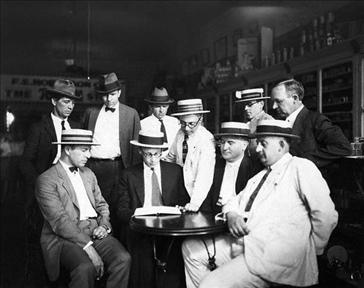
In December 2005, a U.S. federal judge ruled in Kitzmiller v. Dover that the teaching of intelligent design (ID) in public schools is unconstitutional, as it advances a religious viewpoint. Like many other Christians, and believers in the separation of church and state, I fully expected the verdict and applauded it. While the ruling applies only to Pennsylvania's Dover school district, it has set a legal precedent that is heartening to defenders of science education and the theory of evolution, which is central to modern biology. But this will not lead to the creationist movement's extinction. Creationism has a way of adapting to harsh legal environments. Litigated variants are not really dead-ends, they're transitional forms. While ID licks its wounds, creationists are busy pushing what is called "critical analysis of evolution" for inclusion in state science standards for public school biology. To America's adaptive creationists, Kitzmiller v. Dover is just another bothersome bump in what has been a long and winding road in their quest to run down Charles Darwin and his theory of common descent. Can critical analysis do Darwin in?
ANTI-EVOLUTIONISM AND THE SCOPES TRIAL
William Jennings Bryan, a former U.S. secretary of state and three-time presidential candidate, thought he had the answer to Darwin's theory back in the 1920s. Bryan and a band of fellow Christian fundamentalists led a crusade to have the teaching of evolution simply banned by state laws in America's public schools. Such a law was passed in Tennessee. The American Civil Liberties Union (ACLU) then offered to pay the expenses of anyone willing to test the law's constitutionality in court. This would lead to one of history's most famous trials.
John Scopes, a young athletic coach and physics teacher in the small town of Dayton, Tennessee, accepted the ACLU's offer at the urging of some fellow Dayton citizens in a meeting at Robinson's Drug Store. Scopes had briefly substituted for the high school's biology teacher, and couldn't remember if evolution had even been discussed in class. 1 But the whole objective of this drugstore conspiracy (Scopes called it "just a drugstore discussion that got past control") 2 was to put their beloved town of Dayton on the map. The plot certainly worked, as the 1925 Scopes Trial, with Bryan himself assisting with the prosecution as well as serving as a witness (being a self-professed expert on the Bible), and with famed attorney Clarence Darrow defending Scopes, attracted worldwide attention. "If evolution wins," Bryan declared, "Christianity goes." 3 Reporters on the Dayton scene included the Baltimore Sun's acerbic H.L. Mencken, who wrote, "When (Bryan) deluges (these hillbillies) with his theologic bilge they rejoice like pilgrims disporting in the river Jordan." 4


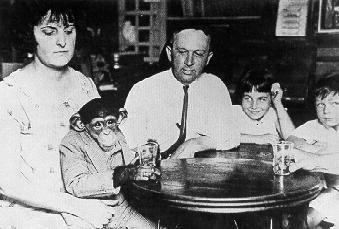
In 1970, an engineering professor and Baptist fundamentalist named Henry M. Morris, co-author of The Genesis Flood, a 1961 book that helped inspire the modern creationist movement, thought he had the answer to Darwin when he founded the Institute for Creation Research (ICR). A "God-called ministry," as Morris described it, whose mission was "creation evangelism," 6 the ICR offered (as it still does today) materials both on "Biblical creationism" (based on the book of Genesis literally interpreted) and "scientific creationism" (for use in public schools with no reference to the Bible). Morris's ICR in California became the unofficial headquarters of the "creation science" movement. But this movement suffered two major legal defeats in the 1980s. In 1982, U.S. District Court Judge William R. Overton ruled in McLean v. Arkansas that an Arkansas "balanced treatment" law requiring the teaching of "creation science" whenever "evolution science" is taught was unconstitutional. Overton called the law "simply and purely an effort to introduce the Biblical version of creation into the public school curricula." 7 And in 1987 the U.S. Supreme Court struck the fatal blow to creation as science in public schools. The court ruled in Edwards v. Aguillard that a Louisiana law requiring the public school teaching of "creation science" whenever evolution is taught had a "religious purpose," thus violating the First Amendment Establishment Clause. 8

Having failed to get the teaching of evolution banned in public schools, and then failing to get the teaching of creation required, creationists turned to a community-level strategy of "education and persuasion," 9 which included holding seminars and debates, and pressuring teachers, school boards, and textbook selection committees to include creationist concepts when evolution is taught. 10 And to avoid using the c-word, a euphemism or code term for creationism came into vogue. The term was "intelligent design." It was used in the 1989 biology textbook Of Pandas and People, by creationist biologists Percival Davis and Dean Kenyon, to replace the word "creation" used in the book's early drafts. 11
Intelligent design (ID) is promoted, of course, as a "theory" distinct from creationism. ID "holds that certain features of the universe and of living things are best explained by an intelligent cause rather than an undirected process such as natural selection." 12 The leading ID organization is the Discovery Institute, a conservative think-tank in Seattle, Washington, founded in 1990. The Discovery Institute argues that the idea of ID long predates the 1987 Edwards decision. 13 This is true, since the British philosopher David Hume debunked the classic "argument from design" over 200 years before Edwards. 14 But the Edwards decision caused the argument from design to be ex-Humed, the corpse all gussied up with "irreducible complexity." 15 "Intelligent design," Henry Morris wrote candidly, "is not really a new approach," it is creationism "made to appear more sophisticated with complex nomenclature and argumentation." 16 To put it another way, ID is like the dress that poverty-stricken Scarlett O'Hara made from her late mama's curtains in Gone with the Wind. It may have looked like a new dress to some, but to Rhett Butler, well, it was curtains.
Bible-based young-Earth creationists like Morris (who died in 2006) have criticized the ID movement for being "not enough," as the ID concept is not accompanied by or followed up with Biblical teaching. 17 The ICR still argues that "creation science" can be legally taught in public schools as long as it is not in a religious context. But that's a hard sell after Edwards, while Biblical creationism is exactly what the ID movement, in seeking public school respectability, has wished not to be identified with. ID proponents have preferred not to be called creationists, though the label "neocreationists" or "neo-creos" has been appropriately applied to them. 18 (Jerry Coyne has labeled ID "The Faith that Dare Not Call Its Name." ID has also been called "creationism in a cheap tuxedo," and, by Wired Magazine, "the 2.0 version of creationism.") 19 "I'm not a creationist," says ID luminary Michael J. Behe, "I'm a biochemist." Another leading light of the ID movement, mathematician/philosopher William A. Dembski, sounded almost agnostic when he wrote that while intelligence is involved in the production of complex biological systems, "just when and how" intelligence is involved "is a matter for further study." 20
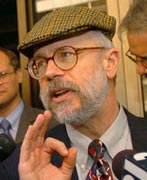
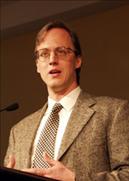
The Discovery Institute has not actually advocated the teaching of ID in public school science classes ("probably," notes critic Chris Mooney, "because of its obvious unconstitutionality"). 25 Since it is rather hard to separate intelligent design from a deity or religion, ID proponents instead use a "teach the controversy" approach to getting ID into the public school classroom. 26 But to begin with, as far as students are concerned, says Eugenie C. Scott, director of the National Center for Science Education, "the controversy about evolution is essentially religious," and questions that are religious in nature are unsuitable for public school classes due to the Establishment Clause. 27 And as far as science itself is concerned, the only controversy among mainstream scientists about evolution relates to its mechanisms, not whether or not it occurs. "The 'controversy' (creationists) claim to be discussing," notes philosophy professor Barbara Forrest, "is one they manufactured, not a genuine scientific controversy." 28 Columnist Charles Krauthammer of the New York Times has summed up ID as "phony theory, false conflict." 29 But as another Times columnist, Paul Krugman, has perceptively stated, ID "doesn't have to attract significant support from actual researchers to be effective. All it has to do is create confusion, to make it seem as if there really is a controversy about the validity of evolutionary theory." 30
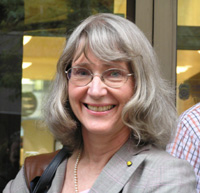
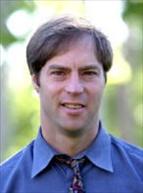
By 2005 this manufactured controversy or confusion had spread among state and local school boards across America. Kansas was one state particularly in the news, with its board of education proposing not only a weakening of evolution in the state's required science curriculum but a change in the definition of science itself (from natural explanations for what is observed in the world, to "a systematic method of continuing investigation," without specifying what kind of answer is sought). 31
A three-member committee of the Kansas school board held hearings on evolution in May 2005 that drew comparisons to the Scopes Trial. Mainstream scientists boycotted the hearings, which were led by John Calvert, director of the Kansas office of the Intelligent Design Network, and were described in Wichita Eagle editorials as an "anti-science crusade," a "waste of time and money," and "a train wreck for the state's image." 32
After the hearings, committee member Connie Morris sent a taxpayer-funded newsletter to constituents calling evolution an "age-old fairy tale" that was defended with "anti-God contempt and arrogance." Describing herself as a Christian who believes in a literal interpretation of Genesis, Morris wrote that evolution was "biologically, genetically, mathematically, chemically, metaphysically and etc. wildly and utterly impossible." 33

Other states in which education disputes over evolution arose in 2002 or later, as the ID movement gathered steam, included California, Georgia, Maryland, Montana, Ohio, Pennsylvania, South Carolina, Texas, Utah, and Wisconsin. President George W. Bush weighed in by telling reporters in August 2005 that "both sides" should be taught "so people can understand what the debate is about." 35 A July 2005 poll showed that 64 percent of Americans believed that creationism should be taught in addition to evolution, and 38 percent favored replacing evolution with creationism. 36
INTELLIGENT DESIGN ON TRIAL
The Kitzmiller v. Dover case went to trial in Harrisburg, Pennsylvania, in September 2005. In October 2004, the Dover Area School District in Pennsylvania had become the first district in the U.S. to require the teaching of ID (in this case the reading of a statement by teachers to students) in biology classes. The ACLU, Americans United for Separation of Church and State, and attorneys with the law firm Pepper Hamilton filed a lawsuit against the school board on behalf of 11 parents, contending that ID is an inherently religious argument. "The members of this school board have made their own religious beliefs part of the high school's science curriculum," said attorney Eric Rothschild. "This policy is not only unconstitutional, it is bad science." 37
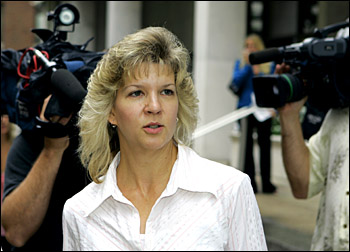
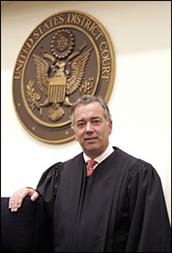
The six-week federal trial concluded with closing arguments on November 4, 2005. Four days later, all eight of the Dover school board members who were up for reelection were voted out of office. One of the ousted members opined, "I think voters were tired of the trial." 42 Religious broadcaster Pat Robertson told the citizens of Dover, "If there is a disaster in your area, don't turn to God. You just rejected him from your city." Robertson said if they have future problems in Dover, "I recommend they call on Charles Darwin. Maybe he can help them." 43

Jones's ruling, which the new board voted not to appeal, plus the one million dollars in legal costs that the board in February 2006 agreed to pay to the plaintiffs' attorneys, was expected to have a deterrent effect on other school boards and teachers considering teaching ID. But Richard Thompson of the Thomas More Law Center said that the movement would not be squelched. "There is more discussion about intelligent design now," he said, "than there ever has been." 45
"CRITICAL ANALYSIS OF EVOLUTION"
Despite Thompson's optimism, the effect of Kitzmiller was soon felt in Ohio. In February 2006, Ohio's board of education voted 11-4 to remove from the state's science standards a "critical analysis of evolution" lesson plan that had been considered a leading model of the ID movement's "teach the controvery" approach to evolution. The Discovery Institute's John West called the removal vote an effort "to use the government to suppress ideas you dislike," and "an outrageous slap in the face to the citizens of Ohio." 46 But Eric Rothschild, the lead attorney for the Dover case plaintiffs, declared in Ohio before the board's vote, "When you see 'critical analysis of evolution,' you really need to look at what's behind that. Who? Why?" Rothschild asked, "Why is there this need for critical analysis of evolution? Why is there no call for critical analysis of plate tectonics?" 47 Martha W. Wise, the board member who proposed the removal motion, said, "It is deeply unfair to the children of this state to mislead them about the nature of science," and another board member who voted for removal cited the "Dover risk" (meaning the risk of a lawsuit) if the critical analysis lesson plan were allowed to remain in the standards. 48
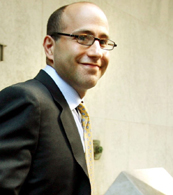

In 2009, the Texas state board of education adopted state science standards including language, such as the requirement that students examine "all sides of scientific evidence," that opens the way to presentation of creationist claims. The NCSE's Scott called the state standards "a triumph of ideology and politics over science." Because of the size of the Texas textbook market (second only to California), the Texas standards could cause treatment of evolution to be diluted in public-school biology textbooks all over the country, unless publishers wish to publish two versions. 53
John Holdren, the head of the White House Office of Science and Technology, said of the Texas standards, "We need to be giving our kids a modern education in biology, and the underpinning of modern biology is evolution. And countervailing views that are not really science, if they are taught at all, should be taught in some other part of the curriculum." 54
OUTSIDE THE UNITED STATES
The creation/evolution conflict is not confined to America. In recent years, notable disputes about including creationism in science education have arisen in Brazil, England, Holland, Italy, and Serbia. 55 In June 2006, 67 of the world's national science academies signed a joint statement urging parents and teachers to provide children with the facts about the evolution of life on Earth. "Knowledge of the natural world in which they live," it states, "empowers people to meet human needs and protect the planet." And the statement points out that "within science courses taught in certain public systems of education, scientific evidence, data, and testable theories about the origins and evolution of life on Earth are being concealed, denied, or confused with theories not testable by science." 56
EVOLUTION AND CHRISTIANITY
It is unfortunate that those involved in the creationist movement, who in America seem uniformly to be of a Protestant fundamentalist persuasion, cannot be more attuned to the official sentiments, which I share as a Christian, of several major Christian denominations and organizations. In 2002 the General Assembly of the Presbyterian Church-USA reaffirmed that "there is no contradiction between an evolutionary theory of human origins and the doctrine of God as Creator." 57 The Mormons officially have a similar view. 58 The National Council of Churches has issued a brochure that "seeks to assist people of faith who experience no conflict between science and their faith," and states that the creation accounts in Genesis should not be understood as history or science but as "proclamations of basic theological truths about creation." 59
In March 2006, Archbishop of Canterbury Dr. Rowan Williams, the leader of the Church of England, said that teaching creationism alongside evolution is "a jarring of categories." He said he worried that "creationism can end up reducing the doctrine of creation rather than enhancing it," treating the Bible as if it were "a theory like other theories." "A belief that everything depends on the creative act of God," the archbishop said, "is quite compatible with a degree of uncertainty or latitude about how precisely that unfolds in creative time." 60
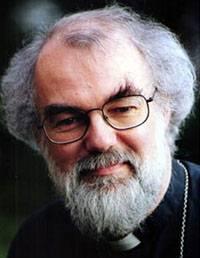
In a 1996 letter to the Pontifical Academy of Sciences, the late Pope John Paul II, calling evolution "more than a hypothesis," reaffirmed the view of Pope Pius XII (Encyclical Humani generis, 1950) that there is "no opposition between evolution and the doctrine of the faith about man," with the understanding that "if the human body takes its origin from pre-existent living matter the spiritual soul is immediately created by God." 62
In 2006 Jesuit astronomer Guy Consolmagno of the Vatican called creationism "a kind of paganism," as it turns God into "a nature god." 63 In 2005 Father George Coyne, who was then director of the Vatican observatory, wrote an article in the British Catholic weekly The Tablet stating that modern science "provides a challenge, an enriching challenge, to traditional beliefs about God," and that "religious believers must move away from the notion of a dictator God or a designer God." Coyne sees God "more as a parent" who "speaks encouraging and sustaining words" but allows a child to grow into adulthood and make its own choices. "God lets the world be what it will be in its continuous evolution," Coyne wrote. "He is not continually intervening, but rather allows, participates, loves." 64
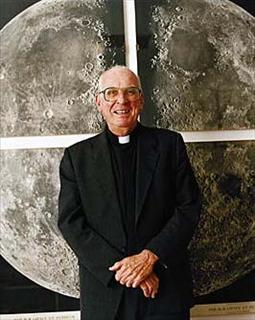

In the 2007 anthology Schoepfung und Evolution (Creation and Evolution), documenting a private seminar that Pope Benedict XVI held with his former doctoral students, the Pope endorsed theistic evolution. He stated that the theory of evolution "implies questions that must be assigned to philosophy and which themselves lead beyond the realms of science." There is a "rationality" in the evolutionary process, the Pope said, that comes from the "creative reason" of God. 67 In July 2007, the Pope stated that evolution "appears as a reality that we must see and enriches our understanding of life and being," but doesn't answer "the great philosophical question: From where does everything come?" 68
United Methodist Bishop Kenneth W. Hicks, testifying in the McLean v. Arkansas "creation science" case, may have said it best: "The words 'In the beginning, God created,' I hold dearly. From that point on, I feel it belittles God and does injustice to both religion and science to circumscribe the way he did it." 69
Such sentiments, however, are seen as a Christian compromise with secular science that in the eyes of young-Earth creationist organizations like the ICR and Answers in Genesis must not be allowed. As Morris wrote in one of his 50-plus books, the Bible cannot be the Word of God unless it is "accepted as absolutely inerrant and authoritative on all matters," including the six-day creation of the universe "not more than 10,000 years ago." 70 Morris believed, moreover, that the theory of evolution is not only "false and absurd scientifically," but is "the anti-God conspiracy of Satan himself." 71 And ID proponents, while they may not publicly quote the Bible, and may accept that the Earth may be older than a few thousand years, are intent to do more than critically analyze evolution. They have stated their purpose of using a wedge (ID, "critical analysis," or whatever else is at hand) to bring down "scientific materialism," by which they mean science as the study of natural phenomena, including evolution, and replace it with "theistic understanding" of the created universe.
Against this determined creationist alliance stands an alliance of public school educators, parents, and others, armed with overwhelming evidence of evolution (not to mention the Establishment Clause), who see creationism, however insightful it may be theologically, as bad science that would deprive schoolchildren of a good science education, more needed than ever.
Neither side intends to capitulate, and the creationist call for "critical analysis of evolution," a strategy to get creationism in the schoolhouse back door, is a sham substitute for the kind of dialogue called for by God, albeit on another matter, in the book of Isaiah (1:18): "Come now, let us reason together."
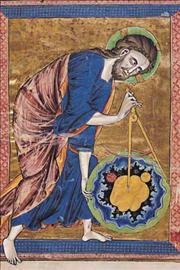
1. Cole, John R., "Scopes and Beyond: Antievolutionism and American Culture," in Laurie Godfrey (ed.), Scientists Confront Creationism (New York: Norton, 1983), pp. 13-32; Stephen Jay Gould, Hen's Teeth and Horse's Toes (New York: Norton, 1983), p. 265.
2. Gould, p. 270.
3. Newell, Norman D., Creation and Evolution: Myth or Reality? (New York: Praeger, 1985), p. 10.
4. H.L. Mencken, "The Monkey Trial: A Reporter's Account," 1925a.
5. Edward J. Larson, Trial and Error: The American Controversy over Creation and Evolution (New York: Oxford University Press, 1989); Ronald L. Ecker, Dictionary of Science and Creationism (New York: Prometheus Books, 1990), pp. 79, 173-176.
6. Henry M. Morris, Letter to Friends of the ICR, July, 1987; Morris, Men of Science, Men of God, Rev. Ed. (El Cajon, CA: Master Books, 1988), p. 95.
7. Judge William R. Overton, "United States District Court Opinion: McLean v. Arkansas," in Michael Ruse, But Is It Science? (New York: Prometheus Books, 1988), pp. 307-331.
8. Clark Dorman (ed.), "Edwards, Governor of Louisiana, et al. v. Aguillard et al." U.S. Supreme Court 85-1513; Larson; Ecker, pp. 72-76; Raymond A. Eve and Francis B. Harrold, The Creationist Movement in Modern America (Boston: Twayne, 1990), pp. 151-154; William Bennetta, "The Rise and Fall of the Louisiana Creationism Law, Part 1: A Bold Trick," Terra 26(6)(1988):20-27.
9. Institute for Creation Research, "The Supreme Court Decision and Its Meaning," Impact 170 (1987), p. iii.
10. Eugenie C. Scott, "Monkey Business," The Sciences 36(1)(1966):20-25.
11. Lauri Lebo, "Witness: Movement's Roots in Creationism," York Daily Record, 10/6/05.
12. Intelligent Design Network.
13. Jonathan Witt, "The Origin of Intelligent Design," Discovery Institute.
14. David Hume, Dialogues Concerning Natural Religion (1779). In Humes's book the character Philo argues that while we are familiar from experience with contrivances designed by man, we have no experience "of the origin of worlds." Thus there is no real "similarity between the fabric of a house, and the generation of a universe," as our limited experience "can afford us no probable conjecture concerning the whole of things" (pp. 149-151, 177).
15. See Michael J. Behe, Darwin's Black Box: The Biochemical Challenge to Evolution (New York: Free Press, 1996).
16. Henry M. Morris, "The Design Revelation," Back to Genesis, February 2005.
17. Henry M. Morris, "Design Is Not Enough!" Back to Genesis 127 (1999); Morris, "Why ICR--and Why Now?" Impact 337 (2001); Answers Update, May 2002.
18. Eugenie C. Scott, "Creationism, Ideology, and Science," National Center for Science Education, 1996; Massimo Pigliucci, "Design Yes, Intelligence No," Skeptical Inquirer, September 2001; Jim Holt, "'Intelligent Design Creationism and Its Critics': Supernatural Selection," New York Times Book Reviews, April 14, 2002.
19. Jerry Coyne, "The Faith that Dare Not Speak Its Name," The New Republic, August 22, 2005. The "tuxedo" definition is credited to paleontologist Leonard Krishtalka in Peter Slevin, "Teachers, Scientists Vow to Fight Challenge to Evolution," Washington Post, May 5, 2005.
20. William A. Dembski and H. Allen Orr, "Darwin and Design: A Debate about the Latest Defense of Intelligent Design," Boston Review Oct./Nov., 2002.
21. Chris Mooney, "Survival of the Slickest," The American Prospect, December 2, 2002.
22. For more on the Wedge strategy, modeled after splitting a tree trunk (in this case, science) with a wedge applied at the trunk's weakest point, see Barbara Forrest and Paul Gross, Creationism's Trojan Horse: The Wedge of Intelligent Design (New York: Oxford University Press, 2003) and Phillip E. Johnson, The Wedge of Truth: Splitting the Foundations of Naturalism (Downers Grove, IL: InterVarsity Press, 2000).
23. William A. Dembski, Intelligent Design: The Bridge between Science and Theology. Downers Grove, Ill.: InterVarsity Press, 1999), p. 206.
24. Jeff Robinson, "Dembski to Head Seminary's New Science & Theology Center," BP News, September 17, 2004.
25. Chris Mooney, "Inferior Design," The American Prospect, August 10, 2005.
26. Stephen C. Meyer and John Angus Campbell, "Teach the Controversy," Baltimore Sun, March 11, 2005; Hartwig 2002; Mooney 2002.
27. Eugenie C. Scott, Evolution vs. Creationism: An Introduction (Berkeley: University of California Press, 2005), pp. 216-217.
28. Jeffrey M. Rosenfeld, "In 'The Designer' We Trust?" Harvard Political Review, November 11, 2002.
29. Charles Krauthammer, "Phony Theory, False Conflict." New York Times, November 18, 2005.
30. Paul Krugman, "Design for Confusion," New York Times, August 5, 2005.
31. John Hanna, "In Evolution Debate, Kansas Weighs Redefining Science," Boston Globe, May 16, 2005.
32. Wichita Eagle, "Scientists Right to Boycott Evolution Hearings," March 30, 2005; "Evolution Hearings Rejected by Scientists," April 12, 2005.
33. David Klepper, "Kansas School Board's Hearings on Evolution End in Acrimony," Knight Ridder Newspapers, May 12, 2005.
34. "Kansas School Board Redefines Science," CNN, November 8, 2005; John Hanna, "Board of Ed's Newest Members Central to Science Decision," Associated Press, February 14, 2007.
35. Peter Baker and Peter Slevin, "Bush Remarks on 'Intelligent Design' Theory Fuel Debate," Washington Post, August 3, 2005.
36. Laurie Goodstein, "Teaching of Creationism Is Endorsed in New Survey," New York Times, August 31, 2005.
37. American Civil Liberties Union, "Pennsylvania Parents File First-Ever Challenge to 'Intelligent Design' Instruction in Public Schools," December 12, 2004.
38. York Daily Record, September 25, 2005.
39. Christina Kauffman, "Intelligent Designers Down on Dover," York Dispatch, September 19, 2005.
40. Ibid.
41. Alex Johnson, "'Intelligent Design' Faces Big Day in Court," MSNBC, September 23, 2005. For a law review article on ID and the Constitution, see Matthew J. Brauer, Barbara Forrest, and Steven G. Gey, "Is It Science Yet? Intelligent Design Creationism and the Constitution," Washington University Law Review 83(1), 2005.
42. Andrew Buncombe, "Alternative to Darwinism to Be Taught in Kansas Schools," The Independent, November 10, 2005.
43. "Robertson: PA Voters Rejected God," CBS News, November 11, 2005.
44. "Memorandum Opinion" (pdf file), Kitzmiller v. Dover et al., filed 12/20/05.
45. Christina Kauffman, ""Legal Bill Could Halt Imitators," York Dispatch, February 23, 2006. In January 2006, a federal lawsuit was filed against the El Tejon Unified School District in California over a philosophy course on ID, taught by a special-education teacher who was also a minister's wife, using young-Earth creationist materials. The suit, which said the course "was designed to advance religious theories on the origins of life, including creationism and its offshoot, 'intelligent design'," was settled within days when the school agreed to stop teaching the course and promised not to teach it again. A spokesman for Americans United for Separation of Church and State, which filed the suit on behalf of 11 parents, said, "This course was far from intelligently designed" (Ann M. Simmons, "Creationism Falls from Kern County School Curriculum," Los Angeles Times, January 17, 2006).
46. Jodi Rudoren, "Ohio Board Undoes Stand on Evolution," New York Times, February 15, 2006.
47. Catherine Candisky, "Intelligent-Design Push," Columbus Dispatch, February 13, 2006.
48. Rudoren.
49. John Mott Coffey, "Law May Open Classrooms to Creationism," The Commercial Dispatch, April 22, 2006.
50. Bill Robinson, "New School Guide OK'd," The State, June 13, 2006.
51. "Minnesota Becomes Third State to Require Critical Analysis of Evolution," Discovery Institute, May 17, 2004.
52. Discovery Institute, "Is Critical Analysis of Evolution the Same as Teaching Intelligent Design," Truth Sheet #02-06, 2006.
53. Glenn Branch, "Evolution Education Update," National Center for Science Education, April 17, 2009.
54. Ibid.
55. Nick Matzke, "Teaching Creationism in Public School Authorized in Rio de Janeiro, Brazil," National Center for Science Education, July 14; Tony Halpin, "Creationism to Be Taught on GCSE Science Syllabus," London Times, March 10, 2006; "Exam Board Rules Out Creationism in UK Classrooms," Ekklesia, May 24, 2006; James Randerson, "Ministers to Ban Creationist Teaching Aids in Science Lessons," The Guardian, December 7, 2006; Martin Enserink, "Is Holland Becoming the Kansas of Europe?", Science 308(2005):1394; Frederica Saylor, "Italian Scientists Rally Behind Evolution," Science & Theology News, July/August, 2004; Reuters 9/7/04, 9/9/04, 9/16/04.
56. InterAcademy Panel, "National Science Academies Sign Joint Statement on Teaching of Evolution" (pdf file), June 21, 2006.
57. "Statements from Religious Organizations," National Center for Science Education.
58. William E. Evenson and Duane E. Jeffrey, Mormonism and Evolution: The Authoritative LDS Statements (Draper, UT: Greg Kofford Books, 2006).
59. "Science, Religion, and the Teaching of Evolution in Public School Science Classes" (pdf file), National Council of Churches, 2006.
60. "Interview: Rowan Williams," Guardian Unlimited, 3/21/06.
61. 75th General Convention, Resolution A129: "Affirm Creation and Evolution," June 2006.
62. Pope John Paul II, "Magisterium Is Concerned with Question of Evolution, for It Involves Conception of Man," 1996; Constance Holden, "The Vatican's Position Evolves," Science 274(1996):717.
63. Ian Johnston, "Creationism Dismissed as 'a Kind of Paganism' by Vatican's Astronomer." The Scotsman, May 5, 2006.
64. George Coyne, "God's Chance Creation." The Tablet, August 6, 2005.
65. Nicole Winfield, "Vatican: Faithful Should Listen to Science," Associated Press, November 3, 2005.
66. Ian Fisher and Cornelia Dean, "In 'Design' vs. Darwinism, Darwin Wins Point in Rome," New York Times, January 19, 2006; Nicole Winfield, "Vatican Paper Hits 'Intelligent Design'," Associated Press, January 18, 2006.
67. Melissa Eddy, "Pope Says Evolution Can't Be Proven," Associated Press, April 12; Tom Heneghan, "Pope Says Science Too Narrow to Explain Creation," Reuters, April 11.
68. Bill Sanderson, "Evolution & God Do Mix: The Pope," New York Post, July 26, 2007.
69. Bill Keith, Scopes II: The Great Debate (Shreveport, LA: Huntington House, 1982), p. 124.
70. Henry M. Morris, The Biblical Basis for Modern Science (Grand Rapids, MI: Baker Book House, 1984), p. 47. Morris called the genealogies in Genesis 5 and 11 "the most strategic data" for determining the age of the Earth (Evolution and the Modern Christian [Grand Rapids, MI: Baker Book House, 1967], pp. 63-64).
71. Henry M. Morris, The Troubled Waters of Evolution, 2nd ed. (San Diego: Creation-Life, 1982), p. 184; Bibical Cosmology and Modern Science (Nutley, NY: Craig Press, 1970), p. 71.
More on Evolution:
The Call of the Gray Tree Frog
Intelligent Design, or Is Mother Nature Built?
Copyright 2006-2009 by Ronald L. Ecker
Top of Page | The Ron Ecker Home Page